- Preparation for Growing Melons
- 1. Site Selection
- 2. Soil Preparation
- 3. Planting
- 4. Watering
- 5. Mulching and Support
- Choosing the Right Variety of Melons
- Creating the Ideal Growing Conditions
- 1. Select the Right Location
- 2. Prepare the Soil
- 3. Provide Adequate Water
- 4. Use Mulch
- 5. Support the Vines
- 6. Fertilize Regularly
- 7. Protect from Pests
- 8. Harvest at the Right Time
- Planting Melon Seeds
- 1. Choose the right location
- 2. Prepare the soil
- 3. Sow the seeds
- 4. Planting depth
- 5. Watering
- Providing Proper Care and Maintenance
- 1. Watering
- 2. Fertilizing
- 3. Sunlight
- 4. Support and Pruning
- 5. Pest and Disease Control
- 6. Harvesting
- Ensuring Adequate Watering and Fertilization
- 1. Watering
- 2. Fertilization
- Managing Pests and Diseases
- 1. Identify and Monitor Common Pests
- 2. Implement Organic Pest Control Methods
- 3. Practice Crop Rotation
- 4. Provide Proper Nutrient Balance
- 5. Maintain Good Garden Hygiene
- Conclusion
- Harvesting and Enjoying Your Melons
- 1. Check for Ripeness
- 2. Use Proper Harvesting Techniques
- 3. Properly Store Your Melons
- 4. Enjoy Your Melons
- 5. Share the Bounty
- “Question-Answer”
- What are the best varieties of melons to grow for a rich and sweet harvest?
- How should I prepare the soil for growing melons?
- What is the best time to plant melons?
- How much water do melons need?
- How do I know when melons are ripe and ready to harvest?
- “Video” How to grow melons easily with high productivity in plastic containers for beginner
Melons are a delicious and refreshing fruit that many people enjoy during the hot summer months. They are also a great addition to any garden, providing a bountiful harvest if grown successfully. However, growing melons can be a challenge if you don’t know the secrets to success. In this article, we will reveal the 5 secrets to growing melons for a rich and sweet harvest.
Secret #1: Choose the Right Variety
There are many different varieties of melons to choose from, each with its own unique flavor and growing requirements. When selecting a variety, it’s important to consider your climate and growing conditions. Some melons are better suited for cooler climates, while others thrive in warmer, more humid environments. Additionally, consider the size of the melons you want to grow and the amount of space you have available in your garden.
Secret #2: Start with Rich, Well-Drained Soil
Melons require rich, well-drained soil to grow their best. Before planting, prepare the soil by adding organic matter such as compost or well-rotted manure. This will help improve soil fertility and drainage. Avoid planting melons in heavy clay soil, as it retains too much moisture and can lead to root rot. Instead, choose a location with loamy soil that drains well.
Secret #3: Provide Adequate Water and Nutrients
Water is essential for melon growth, especially during the hot summer months. Melons require consistent moisture throughout their growing season, so it’s important to water them regularly. Provide about 1-2 inches of water per week, keeping the soil evenly moist but not soggy. Additionally, melons are heavy feeders and require regular fertilization. Use a balanced fertilizer high in nitrogen, phosphorus, and potassium to promote healthy growth and fruit development.
Secret #4: Protect from Pests and Diseases
One of the biggest challenges when growing melons is protecting them from pests and diseases. Common pests that can damage melons include aphids, cucumber beetles, and squash bugs. To prevent these pests, use row covers or insect netting to keep them out. Additionally, practice good garden hygiene by removing any diseased plants or fruits from the garden to prevent the spread of diseases such as powdery mildew or downy mildew.
Secret #5: Proper Harvest and Storage
Knowing when to harvest melons is crucial for getting the best flavor and sweetness. Most melons are ready to harvest when they slip easily from the vine and have a sweet aroma. To store melons, keep them in a cool, dark place such as a basement or pantry. Avoid storing them in the refrigerator, as this can affect their flavor and texture.
By following these 5 secrets to growing melons, you’ll be on your way to a rich and sweet harvest. So, get started and enjoy the taste of your own homegrown melons!
Preparation for Growing Melons
Growing melons requires proper preparation to ensure a successful and bountiful harvest. By following these key steps, you can create the perfect environment for your melon plants to thrive.
1. Site Selection
Choose a sunny location for your melon patch. Melons thrive in full sun, so select an area that receives at least 6-8 hours of direct sunlight per day. Ensure that the soil is well-draining to prevent waterlogged conditions.
2. Soil Preparation
Prepare the soil by removing any weeds, rocks, or debris. Melons prefer loamy soil with a pH level between 6.0 and 7.0. Incorporate organic matter, such as compost or well-rotted manure, into the soil to improve its fertility and drainage.
3. Planting
Sow melon seeds or transplant seedlings after the last frost date for your region. Make sure to space the plants adequately, allowing enough room for their vines to spread. If you are planting multiple rows, ensure a distance of 4-6 feet between each row to provide sufficient air circulation.
4. Watering
Melons have high water requirements, particularly during the fruiting stage. Water deeply and consistently, aiming to keep the soil evenly moist but not waterlogged. Avoid overhead watering, as wet foliage can lead to disease. Consider using drip irrigation or soaker hoses to deliver moisture directly to the roots.
5. Mulching and Support
Apply a layer of organic mulch, such as straw or wood chips, around the melon plants. Mulching helps retain soil moisture, suppress weeds, and regulate soil temperature. Additionally, consider providing support for the melon vines using trellises or fences, as this can save space and protect the fruits from pests and diseases.
By carefully preparing your melon patch and providing the ideal growing conditions, you can ensure a rich and sweet harvest of delicious melons. Follow these steps, and soon you’ll be enjoying your homegrown melons all summer long!
Choosing the Right Variety of Melons
When it comes to growing melons, one of the most important decisions you’ll make is choosing the right variety. The variety you choose will determine the flavor, size, and texture of your melons. Here are some factors to consider when selecting the perfect melon variety for your garden:
- Growing season: Different melon varieties have different growing seasons. Some varieties mature early, while others require a longer growing season. Consider the length of your growing season and choose a variety that will have enough time to mature.
- Climate: Melons thrive in warm and sunny climates. However, some varieties are more tolerant of cooler temperatures or shorter growing seasons. If you live in a region with a shorter growing season or cooler temperatures, select a variety that is known to perform well in those conditions.
- Size: Melon varieties come in a range of sizes, from small personal-sized melons to large family-sized melons. Consider how much space you have in your garden and how many people you will be feeding to determine the right size melon for your needs.
- Flavor: Different melon varieties have different flavors. Some melons are sweeter and have a more intense flavor, while others may be more mild or have a slight tartness. Consider your personal preference and the flavors that appeal to you when selecting a melon variety.
- Texture: Melons can have varying textures, from crisp and firm to juicy and soft. Think about the texture you prefer in a melon and choose a variety that matches your preference.
By considering these factors and doing some research on different melon varieties, you’ll be able to choose the perfect variety of melons to grow in your garden. Remember, it’s always a good idea to try growing a few different varieties to see what works best for you and your garden.
Creating the Ideal Growing Conditions
1. Select the Right Location
Choose a sunny location with well-drained soil for your melon patch. Melons prefer full sun, so look for an area that gets at least 6 to 8 hours of direct sunlight per day. Avoid low-lying areas that can become waterlogged and cause root rot.
2. Prepare the Soil
Before planting your melons, prepare the soil by loosening it with a garden fork or tiller. Remove any rocks, debris, or weeds from the area. Mix in organic matter, such as compost or well-rotted manure, to improve soil fertility and drainage.
3. Provide Adequate Water
Watering is crucial for melon plants, especially during hot and dry periods. Melons have deep root systems, so it’s essential to water deeply and infrequently rather than with frequent shallow watering. Use a soaker hose or drip irrigation system to provide consistent moisture to the plants without wetting the leaves.
4. Use Mulch
Apply a layer of organic mulch, such as straw or wood chips, around the base of the melon plants. Mulch helps retain soil moisture, suppress weeds, and regulate soil temperature. It also prevents soil splashing onto the leaves, reducing the risk of disease.
5. Support the Vines
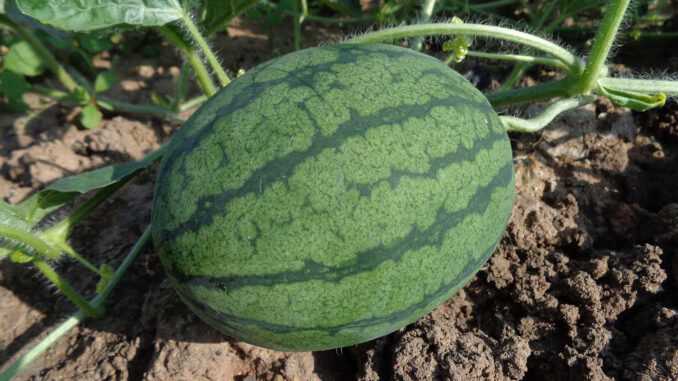
Some melon varieties produce long vines that need support to prevent them from sprawling on the ground. Use trellises or stakes to train the vines to grow vertically. Supporting the vines improves airflow, reduces the risk of fungal diseases, and makes it easier to harvest the melons.
6. Fertilize Regularly
Melons are heavy feeders and require regular fertilization throughout the growing season. Apply a balanced fertilizer according to the package instructions, or use organic fertilizers like compost or well-rotted manure. Side-dress the plants with fertilizer every 3-4 weeks.
7. Protect from Pests
Keep an eye out for common melon pests such as aphids, cucumber beetles, and squash bugs. Monitor your plants regularly and take appropriate action if you notice any signs of damage or infestation. Use organic pest control methods whenever possible to avoid harmful chemicals.
8. Harvest at the Right Time
Harvest your melons when they are ripe. Look for signs such as a strong aroma, a slight softness when pressed at the blossom end, and a dull or yellowish color. Different melon varieties may have specific indications of ripeness, so refer to the seed packet or plant label for guidance. Use a sharp knife or shears to cut the melons from the vine, leaving a short stem attached.
Planting Melon Seeds
Planting melon seeds is one of the first steps to growing delicious melons. By following the right planting techniques, you can ensure a successful harvest. Here are some important tips for planting melon seeds:
1. Choose the right location
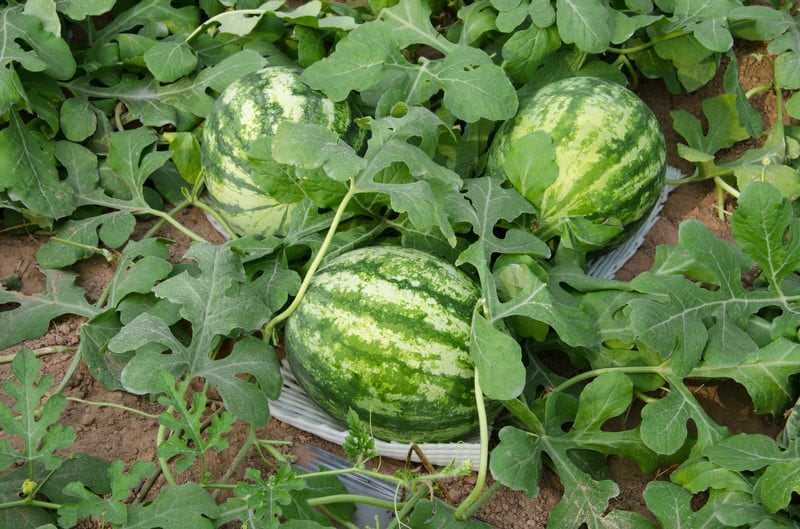
Melons thrive in warm and sunny locations. Choose a spot in your garden that receives full sun for at least 6 to 8 hours a day. Ensure that the soil is well-draining to prevent waterlogging, which can lead to root rot.
2. Prepare the soil
Before planting, prepare the soil by removing any weeds or debris. Melons prefer fertile soil that is rich in organic matter. Add compost or well-rotted manure to improve the soil’s nutrient content and drainage. Break up any clumps of soil to create a fine, crumbly texture.
3. Sow the seeds
Plant melon seeds directly in the garden after the last frost date in your area. Make sure the soil temperature is warm, around 70°F (21°C), for optimal germination. Create small mounds or hills spaced about 4 to 6 feet apart to provide good drainage.
4. Planting depth
Plant the melon seeds about 1 inch deep in the soil. Space the seeds about 6 to 12 inches apart in a row or in a circular pattern if planting in hills. Cover the seeds with soil and gently firm it down.
5. Watering
Keep the soil consistently moist but not waterlogged. Water deeply at the base of the plants, avoiding wetting the leaves to prevent fungal diseases. As the plants grow, increase the amount of water to ensure the melons stay well-hydrated.
By following these planting steps, you will be well on your way to growing ripe and delicious melons in your garden.
Providing Proper Care and Maintenance
1. Watering
Melons require consistent and generous watering, especially during hot summer months. They have deep roots, so be sure to water deeply and regularly, allowing the soil to dry slightly between waterings. Mulching around the plants can help retain moisture and prevent weed growth.
2. Fertilizing
Melons are heavy feeders and require rich soil to thrive. Before planting, amend the soil with compost or well-rotted manure to provide essential nutrients. Additionally, apply a balanced organic fertilizer every 3-4 weeks throughout the growing season to ensure healthy growth and abundant fruit production.
3. Sunlight
Melons are sun-loving plants and require a minimum of 6-8 hours of direct sunlight each day. Make sure to choose a sunny location in your garden or provide necessary shade if you live in an extremely hot climate.
4. Support and Pruning
As melons grow, they can become heavy and require support to prevent them from rotting on the ground. Use trellises, cages, or stakes to lift the melons off the ground. Additionally, regular pruning is necessary to promote airflow and reduce the risk of diseases. Remove any suckers or side shoots that may be competing for nutrients and space.
5. Pest and Disease Control
Melons are susceptible to various pests and diseases, such as aphids, cucumber beetles, powdery mildew, and fungal infections. Monitor your plants regularly and take appropriate measures to control pests and diseases. This may include using organic insecticides, practicing crop rotation, and providing adequate spacing between plants for airflow.
6. Harvesting
Harvest melons when they are fully ripe but not overripe. This can be determined by checking the color, texture, and aroma of the fruit. The stem should easily detach from the fruit when gently twisted. If the melons are not quite ripe, leave them on the vine for a few more days before harvesting.
By providing the proper care and maintenance outlined above, you can ensure that your melon plants grow vigorously and produce a rich and sweet harvest.
Ensuring Adequate Watering and Fertilization
Watering and fertilization are two key factors in growing melons successfully. Without proper hydration and nutrient supply, your melon plants may not produce the desired rich and sweet harvest. Here are some tips to ensure adequate watering and fertilization:
1. Watering
Melons require regular and consistent watering to thrive. They have deep roots that need moisture to reach them. Here’s how to water your melon plants:
- Water deeply: Melon plants need deep watering to encourage their roots to grow deep. Give them a good soak, ensuring the water penetrates the soil at least 6-8 inches.
- Water regularly: Melons require a consistent supply of water. Aim to water them every 2-3 days, especially during hot and dry periods. Keep the soil moist but not waterlogged.
- Avoid overhead watering: Watering from above can lead to leaf diseases and encourage the growth of weeds. Instead, use drip irrigation or water directly at the base of the plants.
2. Fertilization
Proper fertilization is essential to provide the necessary nutrients for healthy melon plant growth. Follow these guidelines for fertilizing your melon plants:
- Pre-planting preparation: Before planting, incorporate well-rotted compost or aged manure into the soil to improve its fertility. This will provide a nutrient-rich environment for the melon plants.
- Use balanced fertilizers: Choose a balanced fertilizer with equal amounts of nitrogen, phosphorus, and potassium (NPK) or one that is slightly higher in phosphorus and potassium. This will promote overall plant growth and fruit development.
- Apply fertilizers at the right time: Fertilize your melon plants when they start to produce runners or vines. Apply a half-strength liquid fertilizer every 2-3 weeks throughout the growing season.
- Avoid excessive fertilization: While melon plants need nutrients, over-fertilization can lead to excessive leaf growth at the expense of fruit production. Follow the recommended dosage on the fertilizer packaging.
By ensuring adequate watering and fertilization, you can create optimal growing conditions for your melon plants. This will increase the chances of a rich and sweet harvest of delicious melons.
Managing Pests and Diseases
Growing melons can be challenging as they are prone to various pests and diseases. However, with proper management, you can reduce the risk and ensure a healthy and abundant harvest. Here are some tips to help you manage pests and diseases in your melon patch:
1. Identify and Monitor Common Pests
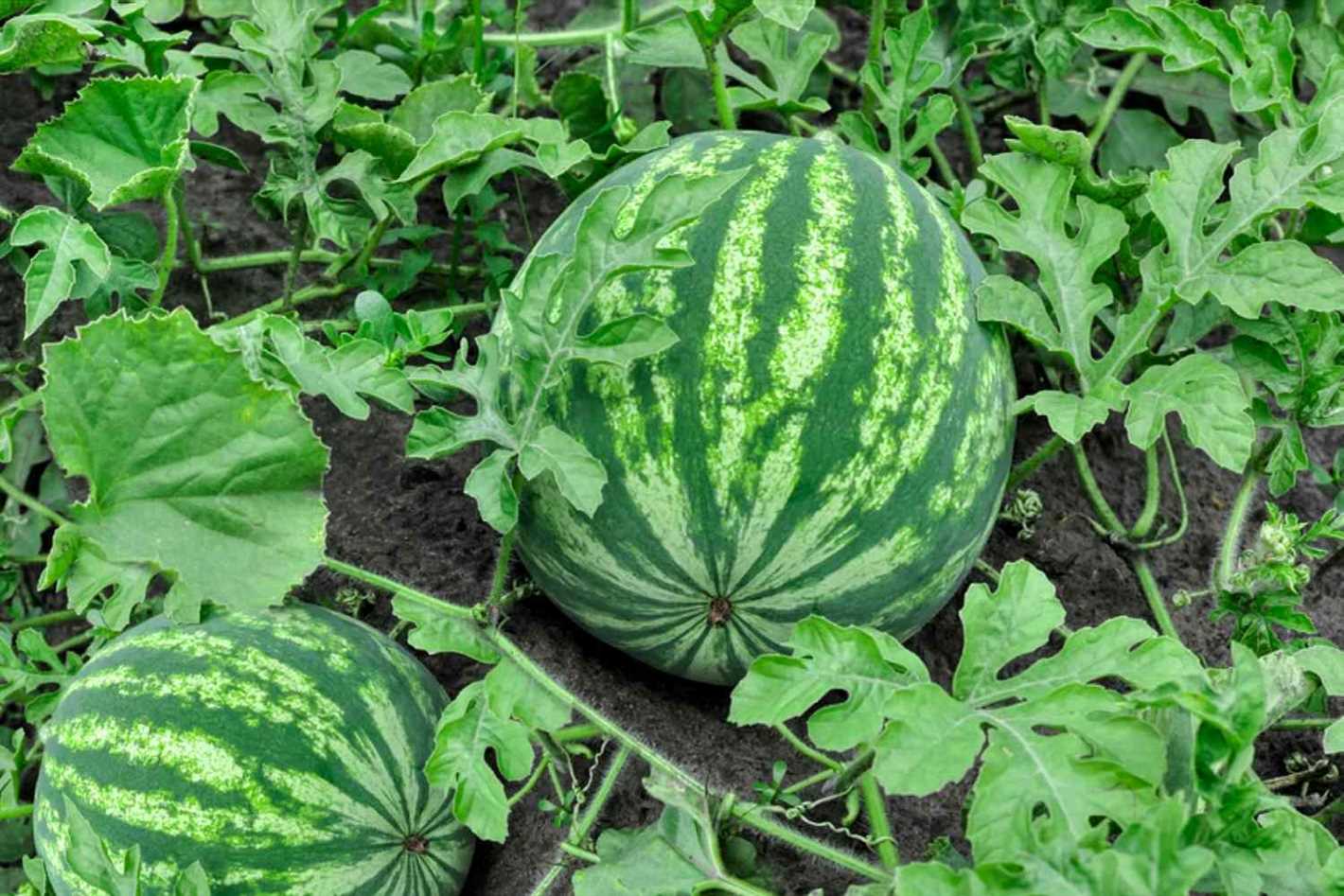
Regularly check your melon plants for signs of pests such as aphids, cucumber beetles, and spider mites. If you notice any infestations, take immediate action to control them before they cause extensive damage. It’s also essential to identify the common pests in your region and learn about their behavior and life cycle.
2. Implement Organic Pest Control Methods
Consider using organic pest control methods to protect your melon plants. These methods include introducing beneficial insects like ladybugs or lacewings, using companion plants to repel pests, applying neem oil as a natural insecticide, or using insecticidal soap sprays. These organic methods are effective and safe for both your melons and the environment.
3. Practice Crop Rotation
Rotate your melon crops each year to prevent the buildup of pests and diseases in the soil. Avoid planting melons in the same location for consecutive years as this can lead to the depletion of nutrients and an increased risk of disease. Rotate with other unrelated crops to break the pest and disease cycle.
4. Provide Proper Nutrient Balance

Ensuring your melon plants receive the right balance of nutrients can help them develop strong and healthy growth, making them less susceptible to pest and disease attacks. Conduct a soil test to determine the nutrient levels, and amend the soil accordingly. Additionally, avoid over-fertilizing, as this can make the plants more attractive to pests and increase the risk of disease.
5. Maintain Good Garden Hygiene
Keeping your garden clean and well-maintained is crucial for preventing the spread of diseases. Remove any fallen leaves or plant debris promptly, as they can harbor pests and pathogens. Regularly weed your melon patch to eliminate potential hiding places for pests. Also, ensure your tools and equipment are clean and sanitized to prevent the transmission of diseases.
Conclusion
By implementing these pest and disease management strategies, you can protect your melon plants and maximize your harvest. Remember to closely monitor your plants, take preventive action, and provide the necessary care to ensure healthy and vibrant melons.
Harvesting and Enjoying Your Melons
Once your melons have reached their full maturity, it’s time to harvest and enjoy the fruits of your labor. Follow these steps to ensure a successful harvest:
1. Check for Ripeness
Before harvesting your melons, it’s important to check for ripeness. Look for the following signs:
- The skin color should be vibrant and the texture should be smooth.
- Tap the melon gently – if it produces a deep, hollow sound, it is likely ripe.
- The stem should be completely dried out and the melon should easily detach from the vine.
2. Use Proper Harvesting Techniques
To avoid damaging the melons during harvest, use a sharp knife or pruning shears to cut the stem about an inch above the fruit. Be careful not to apply too much pressure, as this can cause bruising.
3. Properly Store Your Melons
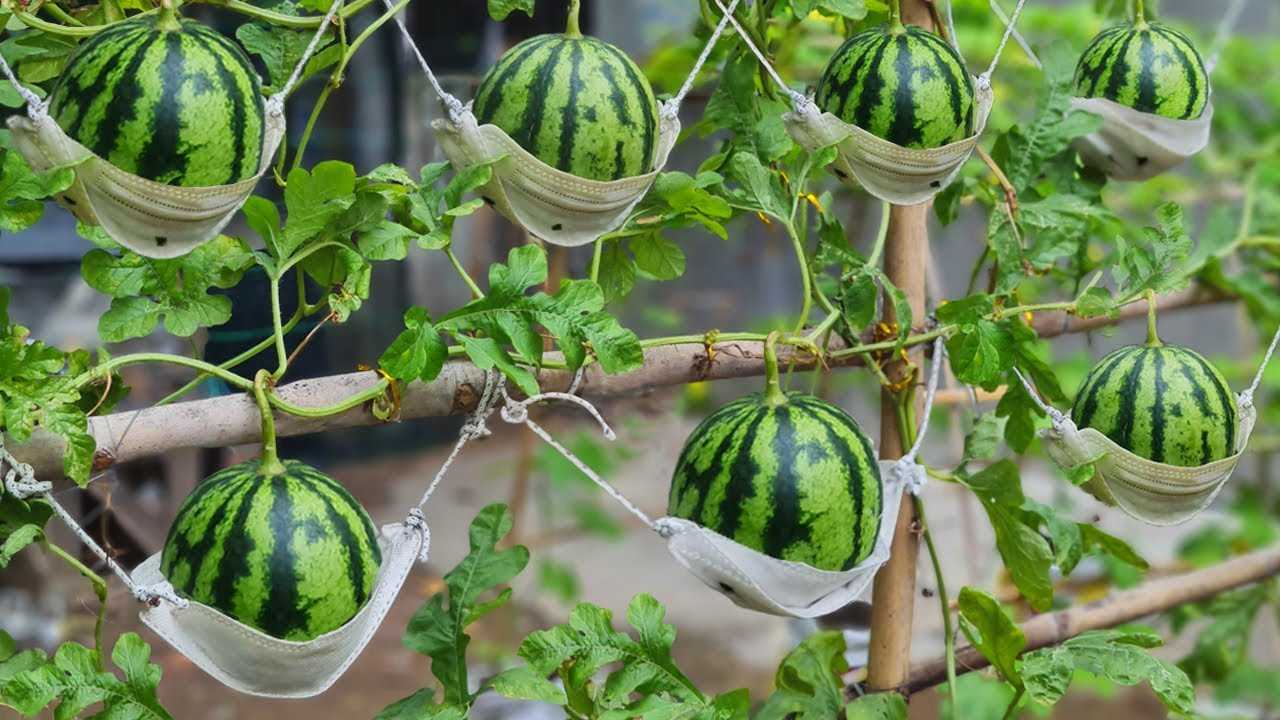
After harvesting, your melons will continue to ripen for a short period of time. Store them in a cool, dry place to maintain their flavor and sweetness. Avoid stacking melons on top of each other, as this can cause bruising.
4. Enjoy Your Melons
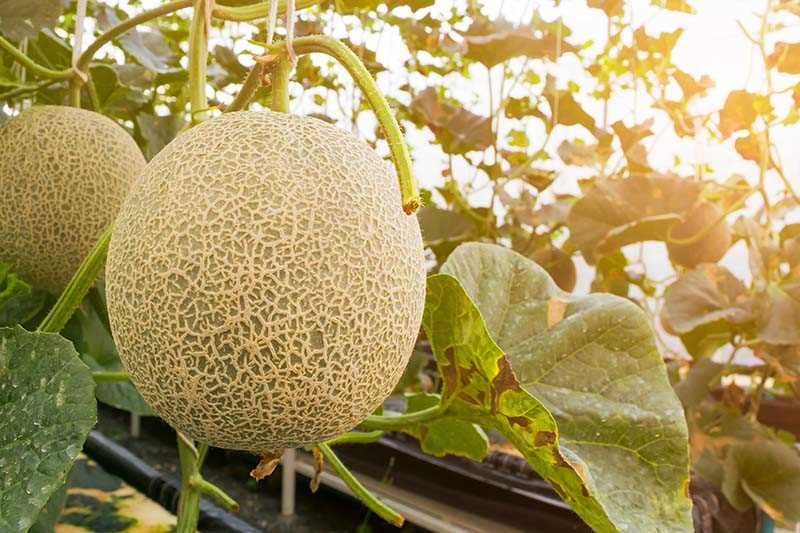
Once your melons have reached the desired ripeness, it’s time to enjoy them! Here are some delicious ways to savor the flavor of your melons:
- Slice the melons and enjoy them as a refreshing snack on their own.
- Add chunks of melon to fruit salads for an extra burst of flavor.
- Blend the melon with yogurt or fruit juice to make a refreshing smoothie.
- Create a melon salsa by combining diced melon, onions, jalapenos, and lime juice – perfect for topping grilled meats.
5. Share the Bounty
If you have an abundance of melons, consider sharing your harvest with friends, family, and neighbors. The joy of growing your own melons is amplified when you can spread the sweetness with others!
| Melon Variety | Description |
|---|---|
| Watermelon | Large, juicy fruit with a sweet, refreshing taste. |
| Honeydew | Round melon with a pale green flesh and a sweet, subtle flavor. |
| Cantaloupe | Orange-fleshed melon with a sweet, musky aroma and flavor. |
By following these harvesting and enjoying tips, you’ll be able to enjoy the rich and sweet flavors of your homegrown melons. Happy harvesting!
“Question-Answer”
What are the best varieties of melons to grow for a rich and sweet harvest?
There are several varieties of melons that are known for their rich and sweet flavor. Some popular choices include Cantaloupe, Honeydew, Watermelon, and Ambrosia melons. It’s important to choose varieties that are suitable for your growing region and climate.
How should I prepare the soil for growing melons?
To prepare the soil for growing melons, it’s important to start by removing any weeds or grass from the planting area. Then, loosen the soil to a depth of at least 12 inches and mix in compost or well-rotted manure to improve fertility and drainage. Melons prefer a slightly acidic soil with a pH level between 6.0 and 6.5, so you may need to adjust the pH if necessary.
What is the best time to plant melons?
The best time to plant melons depends on your location and climate. In general, melons are warm-season crops that require a frost-free growing season. It’s recommended to wait until the soil temperature reaches at least 60°F (15°C) before planting melon seeds. For most regions, this is typically in late spring or early summer.
How much water do melons need?
Melons require a consistent and adequate water supply to grow and develop properly. It’s important to provide 1 to 2 inches of water per week, either through rainfall or irrigation. However, be careful not to overwater as this can lead to root rot and other problems. Mulching around the plant can help retain soil moisture and reduce water evaporation.
How do I know when melons are ripe and ready to harvest?
There are several signs to look for to determine if melons are ripe and ready to harvest. The fruit should have a sweet fragrance, the stem should be dry and easily separates from the fruit with a gentle twist, and the underside of the melon should have a creamy or yellow color. Additionally, the skin of the melon should be firm and without any soft spots or visible damage.







